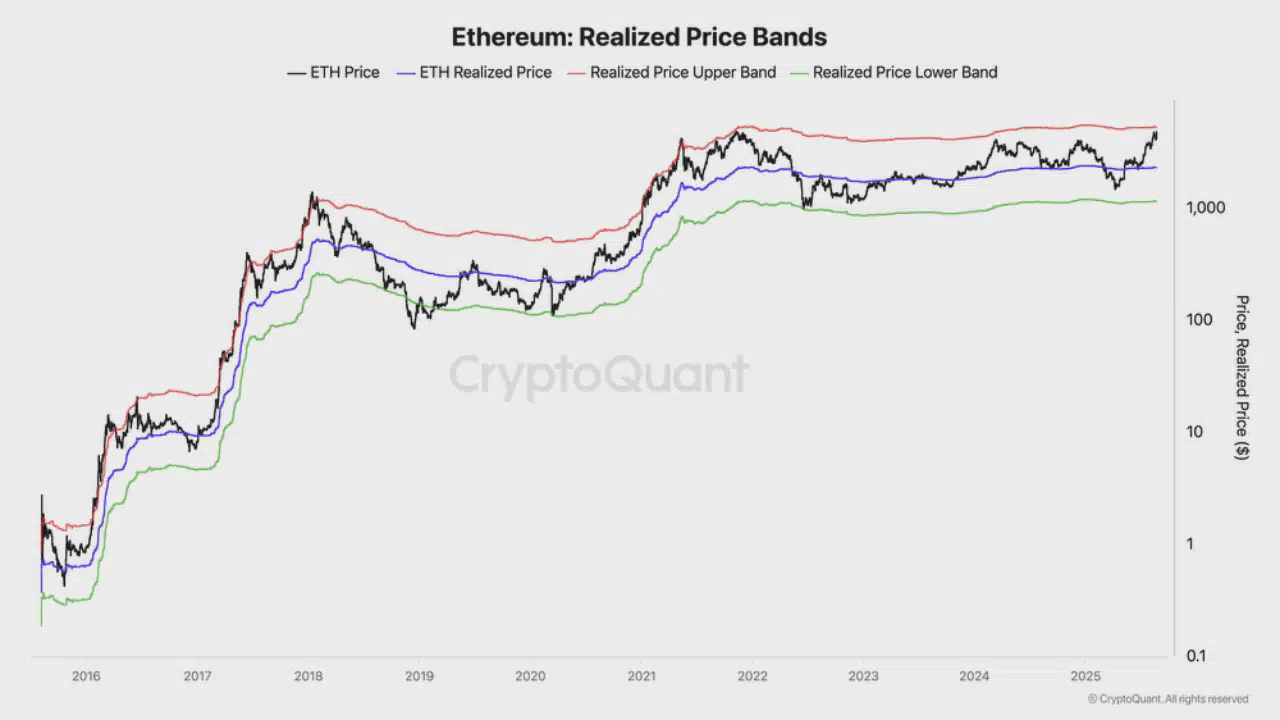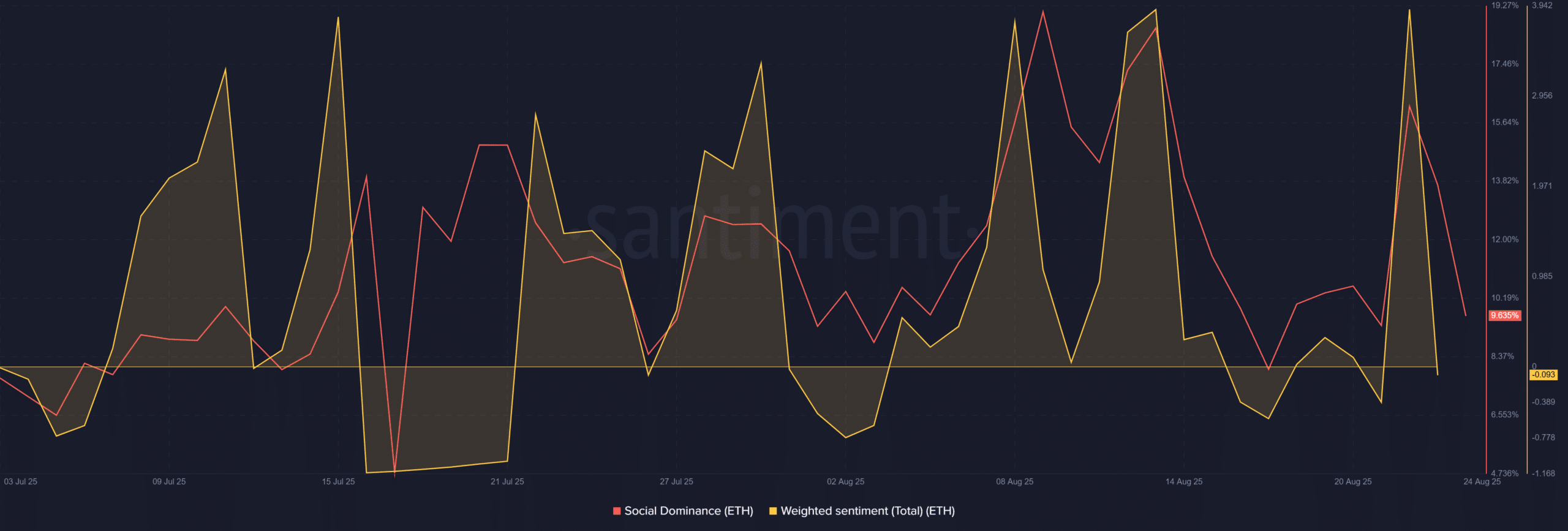Ethereum [ETH] has seen 200,000 ETH withdrawn in just 48 hours, leading to a significant tightening of available supply on exchanges. Such a large-scale outflow of funds is often associated with accumulation by large holders, who tend to prefer custody over active trading.
Therefore, this move would reduce the immediate liquidity of sellers, potentially supporting price stability. Historically, significant outflows of foreign exchange funds often precede price increases due to reduced selling pressure.
However, if demand does not keep pace with the reduction in supply, its impact may weaken. Therefore, monitoring the behavior of whales will be key to confirming whether these withdrawals will result in a lasting supply tightening.
Will the realized price range trigger profit-taking?
As of this writing, on-chain data shows that Ethereum is approaching the upper limit of its actual price range—this range is usually associated with profit-taking by experienced investors. It is worth mentioning that this indicator compares market capitalization with the actual price of the tokens, helping to highlight moments of excessive expansion.
Currently, ETH is testing this boundary—indicating that some holders may wish to take profits. However, in a strong bull market cycle, assets typically break through this area and then consolidate.
Therefore, while the realized swings may suggest caution, they may also emphasize the importance of observing whether demand growth can absorb the potential selling pressure at current levels.
 Can Ethereum break through the resistance level of $4,900?
Can Ethereum break through the resistance level of $4,900?
Ethereum's price action highlights a clear resistance level near $4,921, consistent with Fibonacci extension targets. The support level at $4,770 remains solid, and the rising trend line reinforces the upward momentum.
Additionally, the MACD indicator is above the signal line, suggesting that despite recent consolidation, bullish momentum remains. A breakthrough at $4,900 may release further upside potential, with the next major upward target pointing above $5,800.
However, failing to break through the resistance level may lead to a short-term pullback. Therefore, the price movements around this area in the future are likely to determine whether Ethereum can maintain its bullish momentum or will stagnate at this resistance level.
 Why do sentiment fluctuations indicate market caution?
Why do sentiment fluctuations indicate market caution?
As of the time of writing, Ethereum's weighted sentiment index stands at -0.093. This marks a sharp decline since it approached a peak of +3.9 in mid-August. Earlier this month, its lowest point hovered around -1.1, highlighting the fragility of market confidence.
The social dominance recently broke above a peak of 19% and is now close to 9.6%. Despite high market attention, market confidence has weakened due to price testing heavy resistance levels.
Thus, if it falls to around $4,900, negative sentiment may continue and accelerate profit-taking.
 In summary, with the outflow of funds from exchanges, realized price positioning, technical resistance, and sentiment fluctuations converging, Ethereum is facing a decisive moment.
In summary, with the outflow of funds from exchanges, realized price positioning, technical resistance, and sentiment fluctuations converging, Ethereum is facing a decisive moment.
If ETH breaks through $4,900 with strong momentum, reduced supply and decreased network activity may drive it further up. Conversely, the realized price range and fragile market sentiment suggest that profit-taking may also occur.


